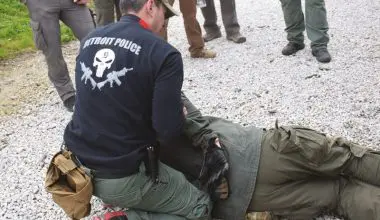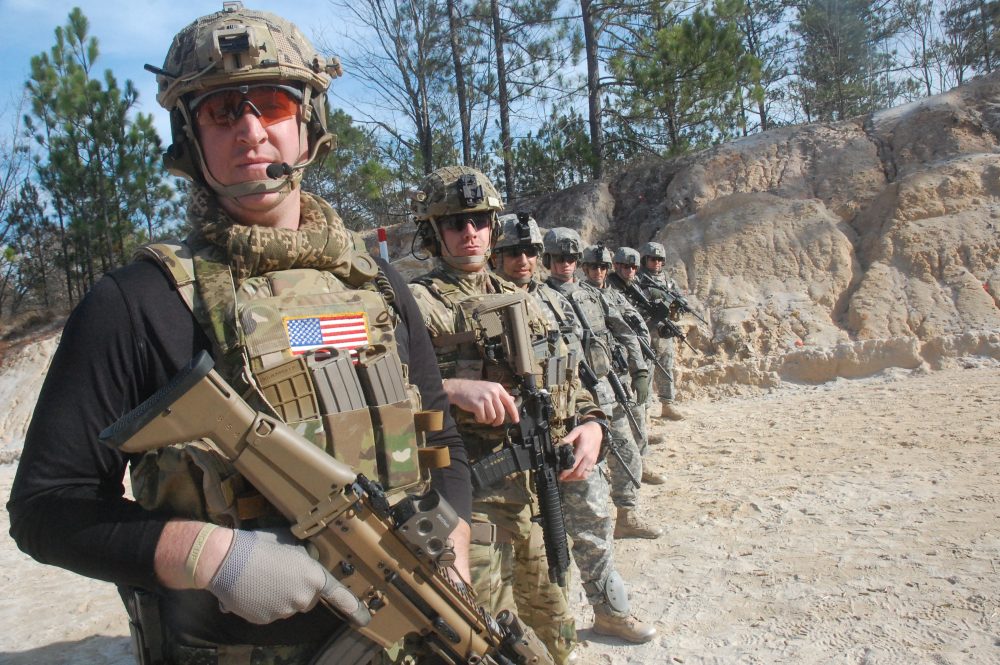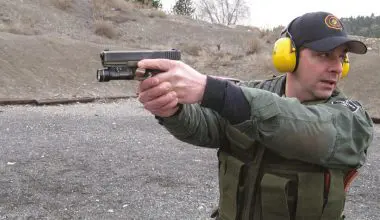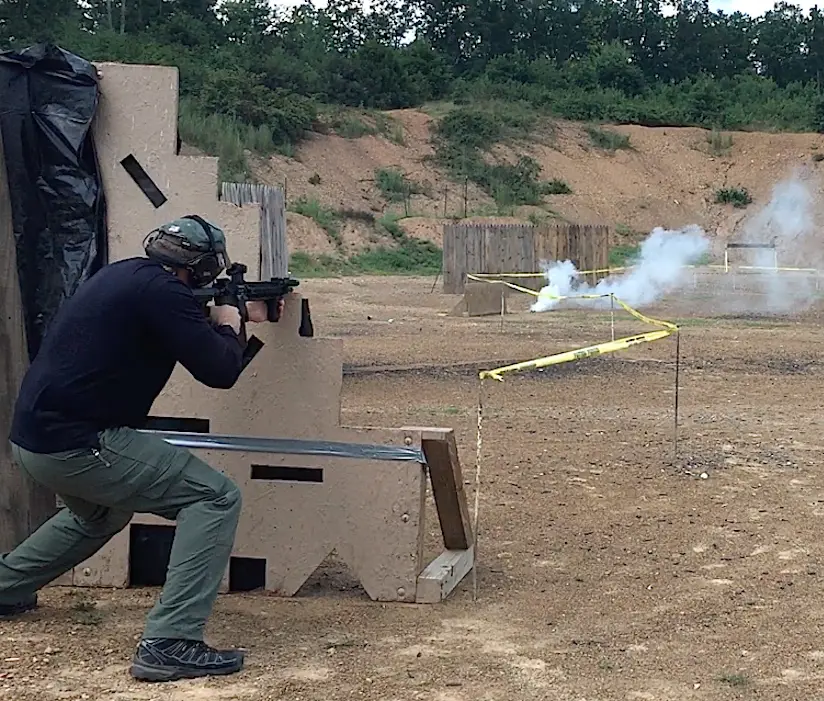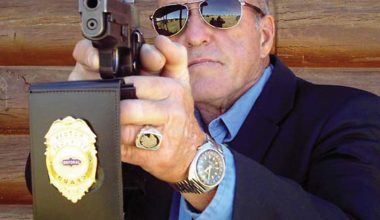Though they are technically support troops, they have a greater chance than most of engaging in ballistic fisticuffs, and in fact, the unit in question has already experienced hostile contact overseas. These are awesome, truly motivated people who are doing good work for the nation. They are not a top secret unit, but as you will understand, I can’t name them and give them the kudos they deserve.
I felt honored to be doing my part in the War on Terror and hopefully help these troops be better prepared when they need to use the weapons and other gear we trained with. But in addition, this training was a great opportunity for me to see firsthand what’s happening in today’s military.
What do the troops know? What don’t they know? What are they being taught by their instructors? How about their equipment—are our fighting men and women being given the best quality gear as they deserve? I hate to use the cliché, “You’ll be surprised at the answers,” but I certainly was.
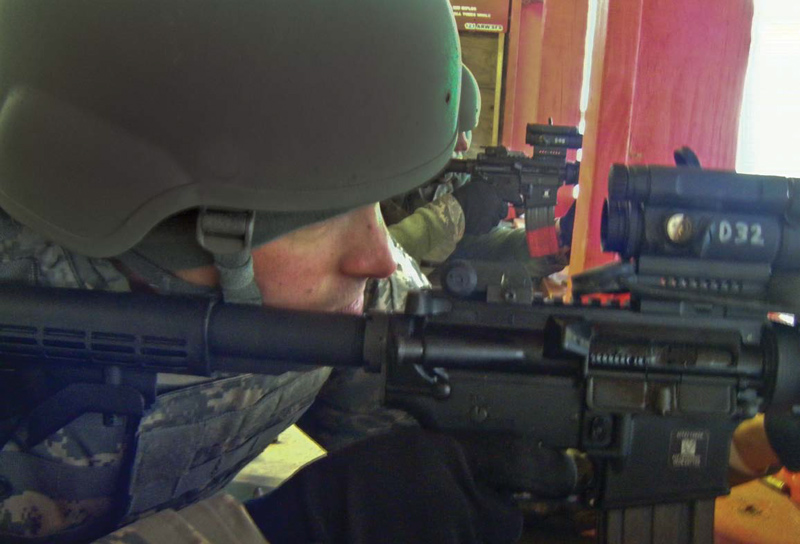
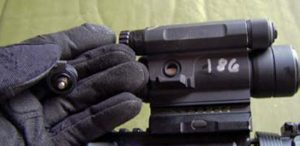
Table of Contents
EQUIPMENT PROBLEMS
Approximately 80% of the group had to give up their long-held M16A2 rifles for M4s with optics. In my opinion, a great trade for them. Their requirements for training and qualification had also increased substantially. Those who had some prior exposure to the M4 were very apprehensive—we found out why and will get into that later. This was an excellent opportunity to examine a large sample of just out-of-the-box Colt M4 carbines, M68 optics (primarily the M4 variant), and the various accessories provided with them.
Out of the dozens of M4 carbines, we did have a few problem children. Some of the retractable stocks had to have the front ridge ground down in order to completely clear the charging handle. Not the end of the world and quickly remedied, but it would have been obvious in pre-shipping inspection if someone had worked the charging handle with the stock retracted.
One carbine’s trigger would not reset. Despite some talented hands and a complete parts replacement, the problem continued. That carbine simply went back. One carbine flash suppressor was canted approximately 45 degrees off center.
Of all the hundreds of other guns, there was not a single weapon-attributable malfunction at any time, despite shooting a literal truckload of ammunition.
What sincerely stunned all of us were two problem Aimpoint M4s. We were stunned because we have had thousands go through our hands and have never, ever seen one with a problem.
The windage adjustment turrets on two of them unscrewed from the body of the optic as the caps were removed. I sent a message to an Aimpoint rep immediately and, within a few hours, was directed on how to return the sights for replacement.
I’m not belaboring the problem, but pointing out why I’m an Aimpoint user for life. In the rare event there is a problem, Aimpoint takes care of you after the sale. As a side note, we did a quick field repair on one of them and the student shot the course with no problems at all. The other 200 or so brand new ones functioned perfectly, as expected.
IRONS TO OPTICS
Though resisted for many years, the age of optics is here—for everyone. Prior to now, the use of optics other than those relegated to precision uses on hunting or sniper rifles has fallen victim to immature technology and plain old prejudice against them. Still, I was more than a bit surprised to learn how many troops about to head off to a war zone were still clinging to their irons.
As mentioned earlier, there were a lot of apprehensive shooters. We found a percentage had previously failed to qualify with the M4/M68 combo, despite some of them being competitive iron-sight shooters!
The standard M68 QRP or QRP2 mount allows a co-witness with the iron sights, helping you with initial zero of the optic. This group of people, however, had been instructed to always use the front sight in conjunction with the red dot.
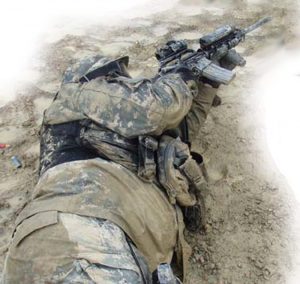
The result was that previously, some shooters were doing bizarre contortions with no consistency at all during actual firing to ensure that the dot sat perfectly on top of the front sight. Worse than the failure to qualify was that their confidence was lacking because of the negative initial experience. Essentially, they were defeating all of the advantages of a red dot sight.
The precision placement of the dot on the tip of the front sight is considerably slower than using traditional iron sights. A call to Pat Rogers revealed that this is not an isolated problem but one that occasionally rears its head with several different branches, including individual units they make action movies about.
COMBAT INSTRUCTION
In order to solve this problem, we devoted considerably more time to the optic. This involved eliminating what is arguably instructional “fluff.” If you are pressed for time, there is no need to go in-depth on rifling twist, chamber pressure and the color of Eugene Stoner’s boyhood home.
These are shooters and future combatants, not gunsmiths and historians. Some of the older shooters had a definite tendency to try to incorporate the irons with the optic, as irons were all they had ever known. In order to guarantee reliance on the optic without the distraction of the front sight, instructional personnel accomplished the initial co-witness and then placed black electrical tape over the front sight post. Being forced to rely on using the dot as a standalone system resulted in an incredible and statistically demonstrable increase in hits, along with better times.
Again, these people were the victims of well-meaning but bad information. This class included everyone from E-2s to a bunch of salty E-8s and 9s and even the unit commander, a Colonel, who was to be admired for demanding the best for— and from—his people.
By the end of our transition training, the troops’ confidence level had increased sharply. This was due to the optic and the corresponding newfound ability to shoot more accurately in a protective mask, during limited visibility and with more situational awareness. And although they are loathe to admit it, those with aging eyes are happy for a clearer sight picture.
“CLICK”?
I am far from God’s gift to firearms instruction and learn from each class, and I especially did in this one. During discussion of optic sight adjustment, I used the term “click” as Aimpoint does. That may not be as self-explanatory as it sounds. With a mandated 25/300 zero, you must adjust eight “clicks” to move the bullet strike one inch at 25 meters. No problem, you say?
One person took “click” to mean a complete 360-degree revolution of the adjustment screw. Considering they had to make a gross adjustment, there is a chance that a few rounds are still in orbit. I learned my lesson. That particular shooter, once we got back on track, easily shot in the 90th percentile. We discovered mid-course that one other shooter, due to an injury, would not put his face in contact with the stock. With iron sights he would have failed, but using a no parallax optic, he didn’t!
Aimpoint provided us with an excellent PowerPoint that helped reinforce the value of the optics and their inherent capabilities. This substantially increased the quality of the presentation.
MANIPULATION AND MAGAZINES
Manipulation is always an issue with units and organizations that do not handle weapons at regular intervals. Despite repeated dry exercises stressing seat/tug, seat/assure or push/pull of the magazine during insertion, people still wale on the bottom of the magazine like they’re trying to signal the tribe on the next island.
In this particular class, we had two variations of the standard USGI 30-round aluminum magazine. The first variation we’ll call “they don’t quite suck,” and the second “why were these not thrown into the sea?”
When you combine the “sea” magazines with the sledgehammer insertion technique, you may get a “volcano.” This is exactly what happened to one young officer. With the bolt open, he slammed the magazine forcefully, which caused live rounds to spray out of the ejection port via weakened feed lips. Pretty cool to watch on a CONUS range, not so cool operationally. As they were found, “sea” magazines were smashed with a hammer amid much celebration.
SLINGS
This unit had received the slings they were apparently supposed to have. I knew they were slings because the box said “slings” on it. Had that marking not been there, it would have taken awhile to figure it out, as they could have been a NASCAR restraint device.
Sophistication is something you want in a German sports car, not a rifle sling. The abomination the unit received was something like a nylon version of the original HK sling with the addition of several buckles, straps and Velcro. It should not take 45 minutes of experimentation to make sure it is fitted correctly. Once fitted, it was not only difficult to adjust but also partially attached to the carbine with Velcro, which for me does not inspire confidence. There are far too many quality single and two-point slings, such as those from Blue Force, to suffer overly complex three points.
The one salient feature on this “target indicator black” sling is a large U.S. flag embroidered on it.
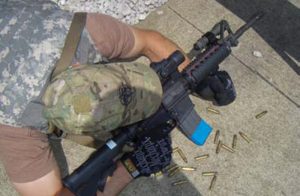
MYTHS
The myth of misaligned gas rings on the bolt is alive and well, despite contemporary instruction to the contrary.
People are still being initially trained to spend precious time “misaligning” them. The three gas rings simply help to keep the loss of gas pressure to a minimum. They do not create an airtight seal under optimal coditions, nor do they need to. Those rings, reciprocating with the bolt inside the carrier, can easily shift on their own, aligning and misaligning themselves.
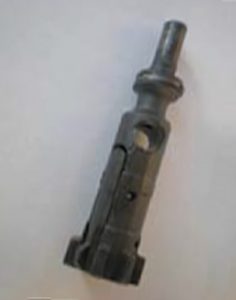
One of my fellow instructors, Bill Clark, ran one without gas rings for a short time just to see what would happen. Although that procedure is certainly not recommended, he had no issues. Any AR-15 pattern rifle that is reasonably in-spec with quality parts should never fail due to misaligned gas rings.
Although nearly all the carbines present were new, students were taught the quick method of determining when ring replacement should occur. They wear just like any other part. By extending the bolt from the carrier and placing it face down on a table, the gas rings should prevent the bolt carrier from collapsing on the bolt.
If it does collapse, replace the rings. For a few dollars, you can have enough spares to outlast the bolt itself. Most casual/ hobby shooters will seldom need to change them. My last set was changed at about 6,000 rounds, and that was just pre-emptive maintenance.
Also doing quite well is the “don’t rest the magazine on the ground” myth. Interestingly enough, students not misaligning gas rings and finding the magazine a handy monopod did not cause the earth’s poles to shift or any sort of detonation at all. “Prone magazine supported” works.
ADMIN BATTLES TO FIGHT
There are still administrative battles to fight. After a lecture on the importance of proper lubrication, one young troop explained to me that at their next pre-deployment training stop, the armorer was telling students to turn in weapons free of any lubrication. It’s 2011—we knew lube was important during the Spanish- American War!
My stock response to lube skeptics is to ask if they use oil in their automobiles. If the answer is yes, I invite them to explain why heat and friction in an engine somehow require lube, but the same conditions in a life-preserving piece of equipment do not require it. If the carbine goes down in a fight, you cannot just coast to the side of the road.
As one of the instructors, this training was an enlightening experience for me. Everyone learned something, regardless of rank or previous skill level. As mentioned above, this unit has already been involved in hostile action overseas. If they get the chance, these folks will slay some bad guys.
Stay safe!
